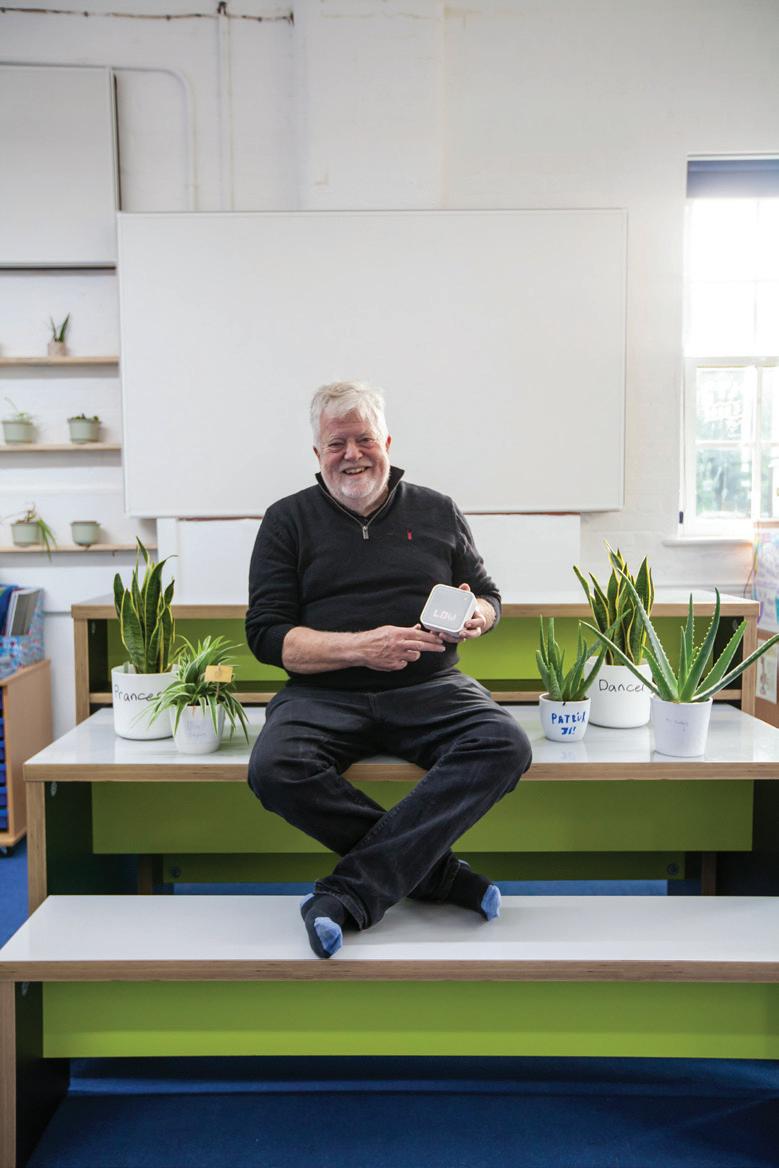
11 minute read
Barefoot ninjas learning in motion
Helping improve learning outcomes
The Gratnells Learnometer is a device developed in partnership with Professor Stephen Heppell and his research team to measure and monitor classroom environments, allowing the optimal conditions to be maintained for improved learning and achievement.
Professor Heppell says, “Our research, and others’, confirms that poor light levels, the wrong temperatures, inappropriate sound volumes and rhythms, humidity, air pollution, CO 2 and air pressure can all impair learning. Our Learnometer research tool automatically samples your classroom environment, and makes suggestions through a unique algorithm as to what might be changed to allow students to learn and perform at their best.”
The Learnometer records data, stores this data in the cloud, and produces dashboard reports, allowing the user to get instant readings, as well as monitor trends and compare locations with differing environmental factors.
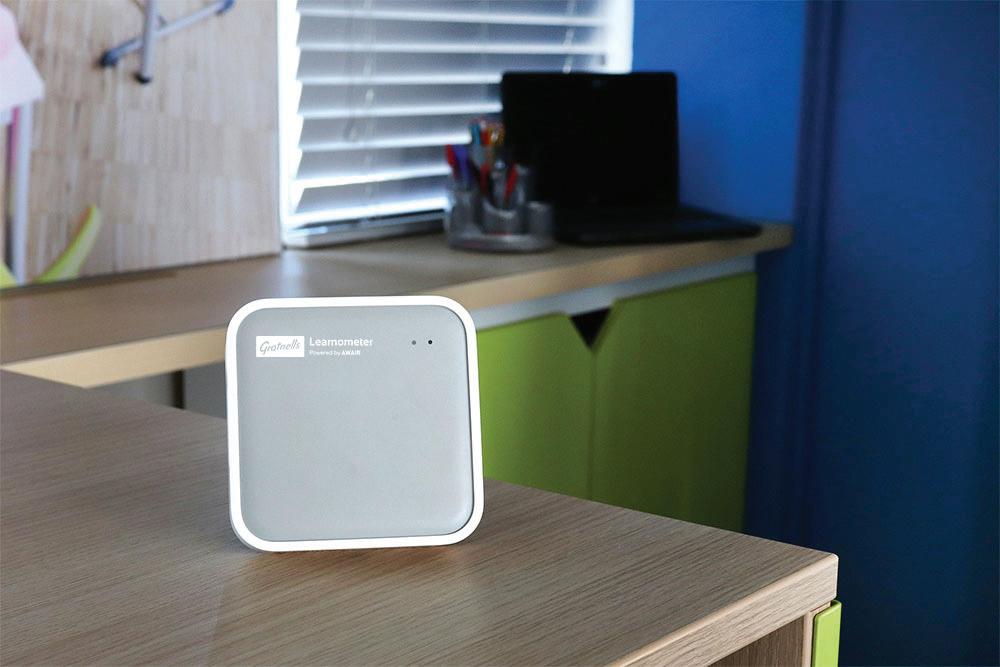
As a constant monitor, visible within the classroom, the Learnometer will also provide the ideal opportunity to engage students in discussion about environmental factors, and can even be used to launch a variety of classroom based STEM projects.


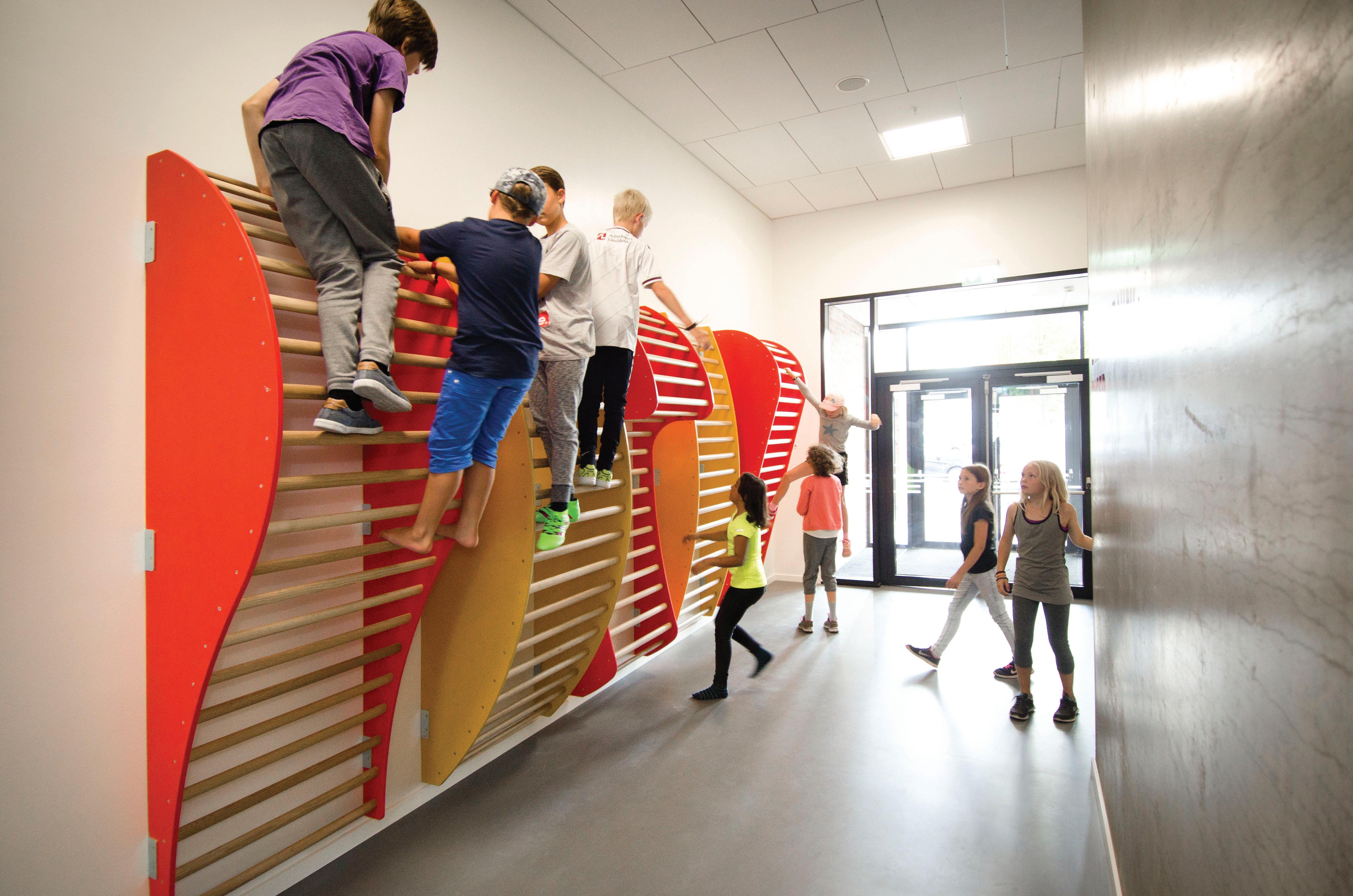
Barefoot ninjas learning in motion
An experimental, innovative design to create active learning spaces, the Frederiksbjerg School in Aarhus, Denmark is built for play. In this school, walking is the least common form of movement. Aaron Hathaway explains why.

An autumn breeze is blowing leaves into the gutters of Ingerslev Boulevard, a wide road running past the brick façade of Frederiksbjerg School. Children run into the heaps of leaves to gather handfuls; some already have them tangled in their hair. As they chase one another through the school’s multi-levelled playground, they cross different zones of age and activity; early teens play a spirited game of basketball; primary level pupils chant along to a skipping routine; six-year-olds inspect the ground for noteworthy bugs. Under a cool grey sky, the clamour of play announces the school from several blocks away.
The Frederiksbjerg School is perhaps the only school to have had a multifunctional ‘ninja track’ assault course included in its blueprints. Its design reflects an educational approach emphasising physical activity: 15,000 m2 (161,500 square feet) of interior spaces and outdoor playgrounds offer students 100 different ways to move throughout their day. The average trip between classrooms takes students up climbing walls, through Twister grids and down dual-lane sprinting tracks. A collaborative design between school administrators, Aarhus city officials and Copenhagen architecture firm Henning Larsen, Frederiksbjerg School is an experiment in education: educational policy and physical design work in tandem to explore a more mobile model for learning. Daily schedules and classroom layouts support a curriculum rooted in mobility, giving the school’s 960 students a greater role in determining how they learn.
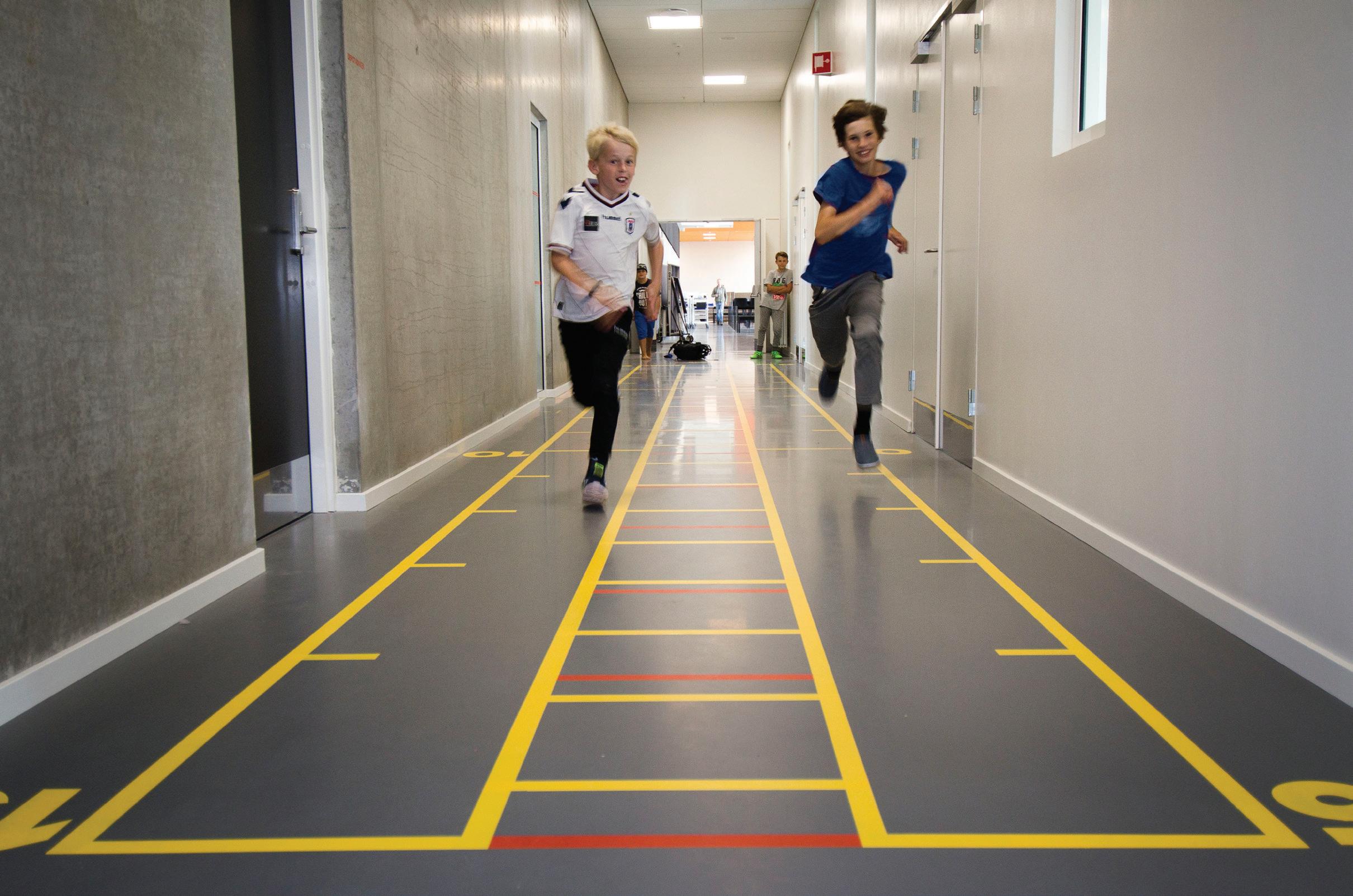
Here, physical form reflects pedagogical philosophy; a new approach towards creating healthier learning spaces. Movement is in the building’s DNA.
Creating space for movement Gathered for a morning meeting in a classroom of Frederiksbjerg School’s elementary wing, 25 pupils sit where they please. Some line up in orderly rows on stepped benches, some curl up in the classroom’s window seats. The session lasts no more than 15 minutes, nearing the maximum time limit students can concentrate whilst sitting stationary. The curriculum itself prompts students to migrate between the communal blackboard, collaborative work tables and quiet rooms for individual study. The classroom has been purpose-built to subvert the traditional static rows still found in the majority of schools.
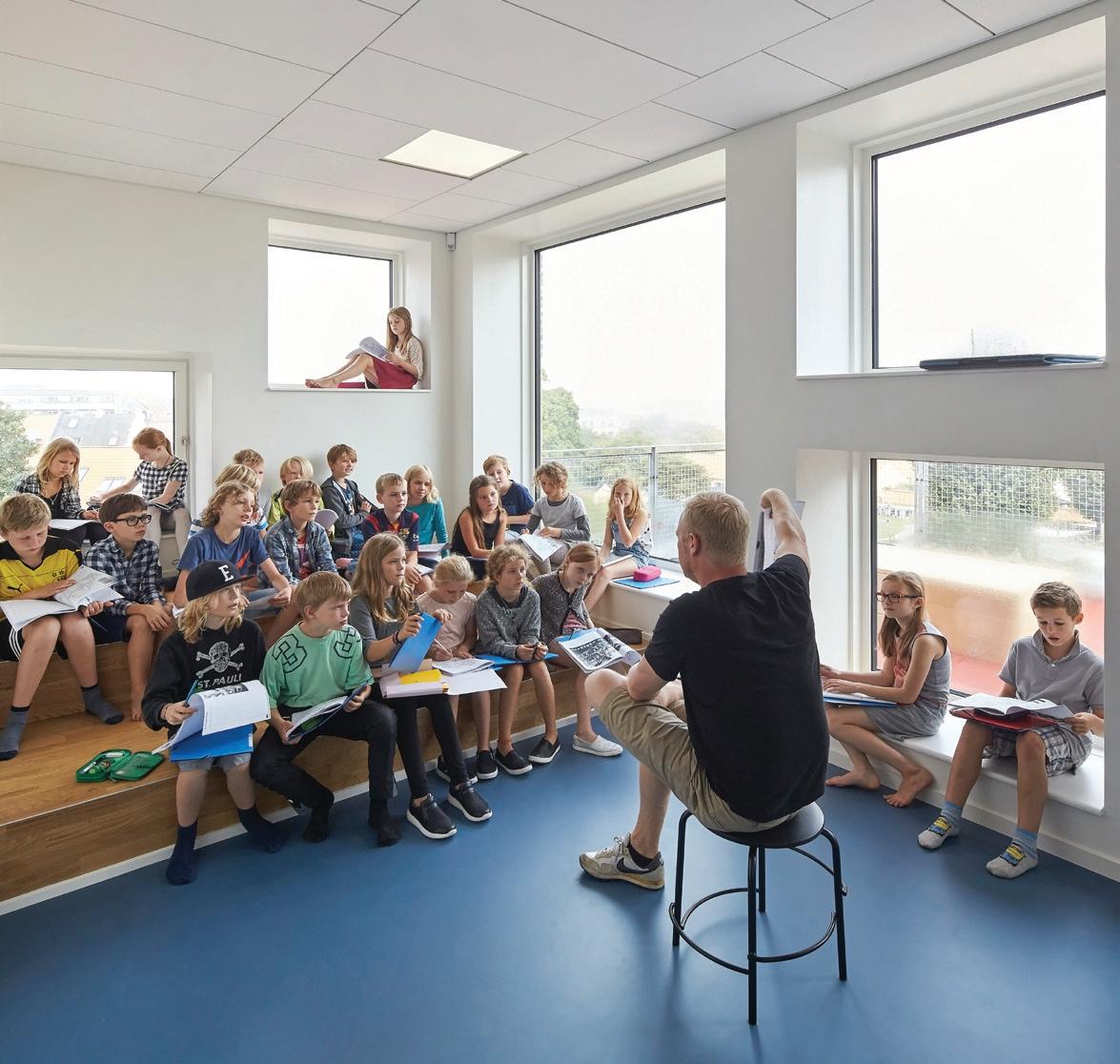
Jette Bjørn Hansen, principal at Frederiksbjerg School, says that dismantling a stationary classroom model is a learning experience for students and teachers alike. “In a way, it’s a paradigm shift. We’re moving away from the old school model, where the teacher stands at the front and runs everything,” Hansen says. “This new structure trains the students’ independence. They know that they’re meeting back together after 20 minutes of group work, so even the younger students learn to look at the clock and keep track of their time.” Hansen serves as principal in the space she helped create. She was part of the project group that developed a pedagogical vision to guide the construction of the new school, which opened in 2016 as a replacement for the aging Sct. Annagade School. Together with other school leaders, city officials and input from over 50 members of staff, the project group proposed a school whose physical form would allow students to engage with learning spaces on their own terms.

More energy burned outside of class means less energy to fuel restless students during lessons. Versatile interior spaces allow students to find their best space for learning. For Hansen, the pedagogical philosophy supporting this vision comes from both solid research and common sense. “If you sit still for too long, your brain will fall asleep. It’s like a light that switches off,” Hansen says. “Moving your body is the best way to keep your brain awake — students are better learners when they stay active, and they tend to be happier about learning.” Hansen is one of only a few at Frederiksbjerg School who enjoys the privilege of wearing shoes. Students’ outside shoes, boots and mobile phones are prohibited; to be stored in personal lockers throughout the day. The 960 pairs of stocking feet illustrate the way that ongoing school policy enables the fullest realization of the school’s initial vision.
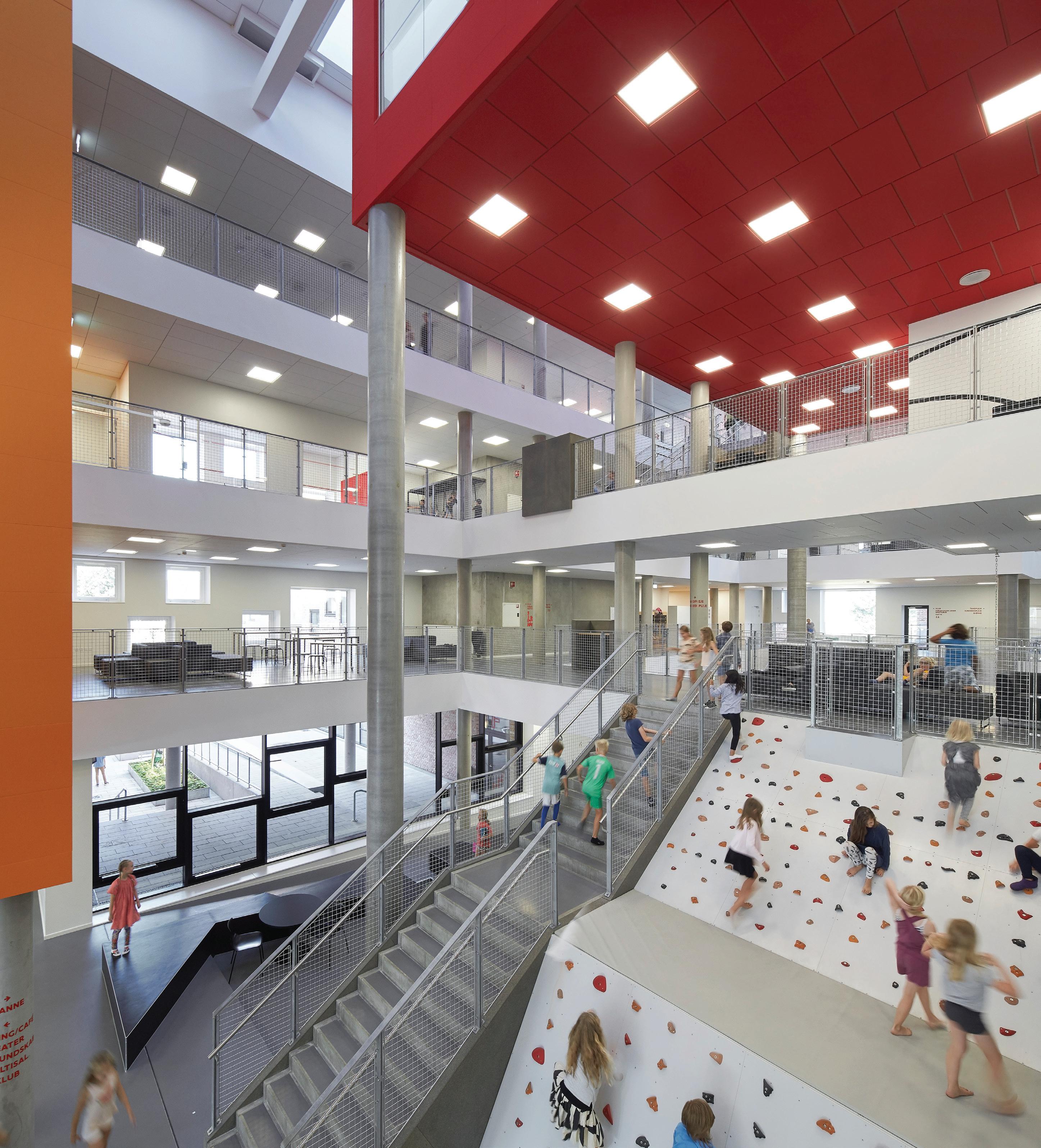
Students need not pause to unlace boots before scaling the ground floor climbing wall, and can freely crawl into classrooms’ recessed windowsills without tracking dirt on the walls. Philosophy informs policy, and policy supports philosophy. The no shoes rule allows students to best engage with the school’s philosophy of motion — and, Hansen believes, acts as a social equalizer. “We saw that when the students don’t use shoes indoors, they are friendlier with one another. When you don’t get to be a tough guy in big boots or a special girl in high heels, everybody is more equal,” Hansen says.
Balancing work and play A sunlit central atrium forms the nucleus of the school’s daily activity. It encourages relationships between the school’s 960 students; a common space for kindergarteners and teenagers to share in sock-footed parallel play. Classrooms on the school’s four levels stratify students by age: On the lower levels, younger students are grouped by age into clusters of learning spaces encircling a common room; higher up, students shift between subject-specific classrooms.

The central staircase is split between conventional steps and a climbing wall, another staircase resembling a half-finished Tetris grid challenges students to ascend in careful leaps. Diffuse daylight in the atrium illuminates details of a playful graphic identity: portholes embedded in the walls at the average height of an eight-year-old reveal detailed dioramas of domestic scenes. Shakespeare quotes are written on the walls of English classrooms in a custom font and there are custom labels on litter bins. Sounds of study and play reverberate within the fourlevel atrium, encouraging a sense of unity between the school’s age-stratified layers. Shortly before noon, students spill out into the atrium to pass between classes, plunging the school into adolescent bedlam. Students trailing book bags burst out of classrooms in skips and sprints, careering around corners and past hall monitors. Walking appears to be the least common form of transport here; friendly horseplay goes largely un-scolded.
Installations such as ping pong tables, climbing ropes or the dangling handholds of the multifunctional ninja track provide a physical outlet for exertion. But the school makes a place for calm too: curtained reading nooks and high-backed couches offer sheltered respite from the surrounding energy. On the third floor, five girls chat quietly at a communal table as one boy drags his companion past by the leg, stomach squeaking on the polished floor. These microcosms of fevered activity and thoughtful solitude exist in unlikely equilibrium, a balance which sums up Frederiksbjerg School’s educational philosophy. Compared to the monastic order encouraged in traditional school hallways, the tolerance for spirited play at this school might be seen as incompatible with focused learning. But the support for activity at Frederiksbjerg School takes root in the belief that this exertion is a necessary component — perhaps a precursor — to learning. “Of course some students still have problems with being disruptive in class, but they’ll still have that if you try to keep them calm throughout the day, and they might get even more restless,” Hansen says. “We try to take steps to allow students to move as they will. It’s natural for the body to be in motion, and we want to create the right space to bring that out.”
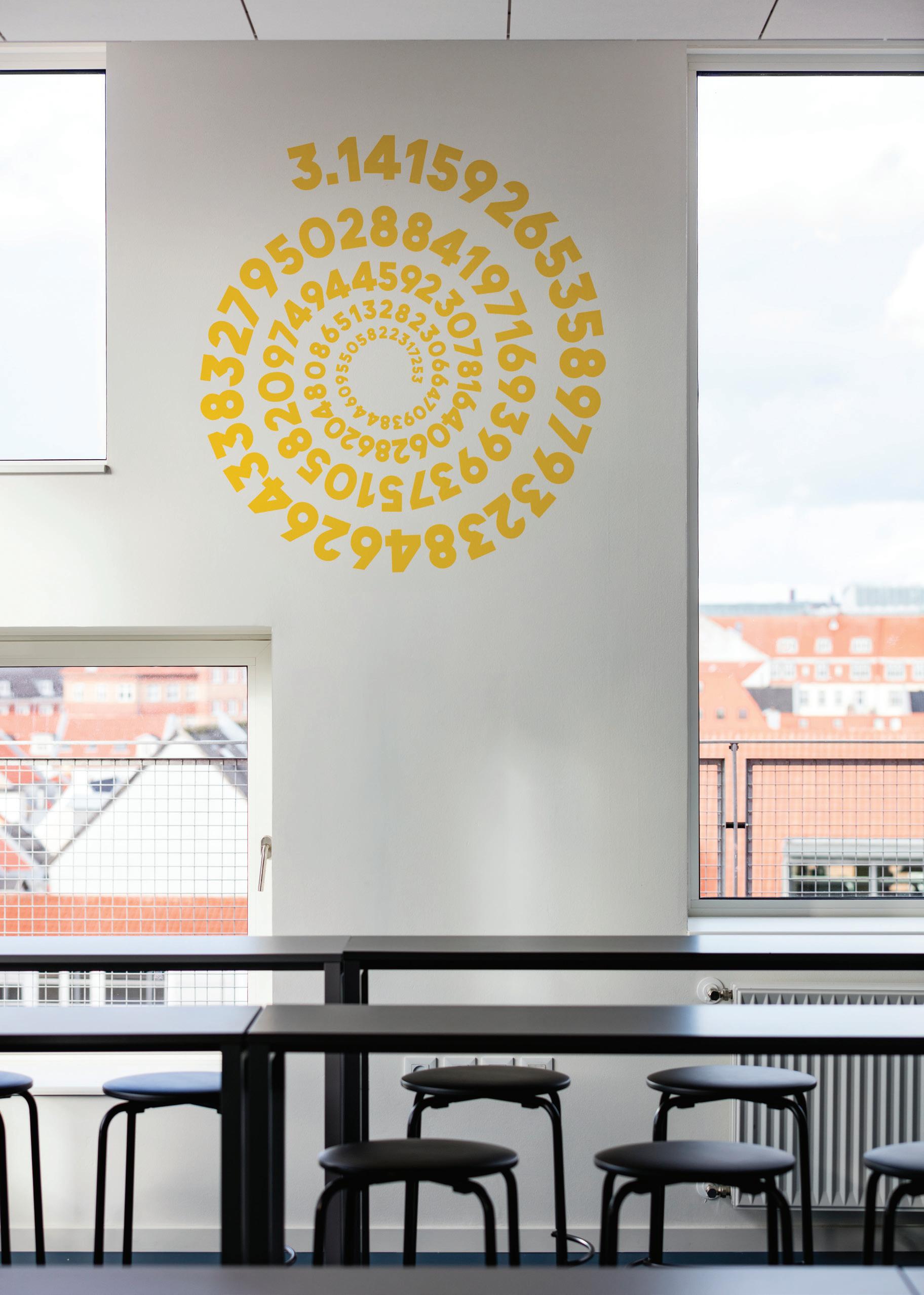
Light and learning Inside classrooms, students learn on their own terms. Room layouts, furniture choices and lighting options emphasize versatility, adaptable to different purposes and atmospheres. Driving this dynamic design is a desire to accommodate alternative learning preferences. Students with learning disabilities, or those who simply find themselves restless during class, have the option to leave class for what Hansen terms a ‘power break’, a brief five-minute recess to let off steam and return renewed. Frederiksbjerg School collaborated with Henning Larsen to explore the role of interior lighting in creating more comfortable classrooms. Moving beyond the fluorescent tube light native to so many offices and schools, they instead installed hanging pendant lamps in classrooms.
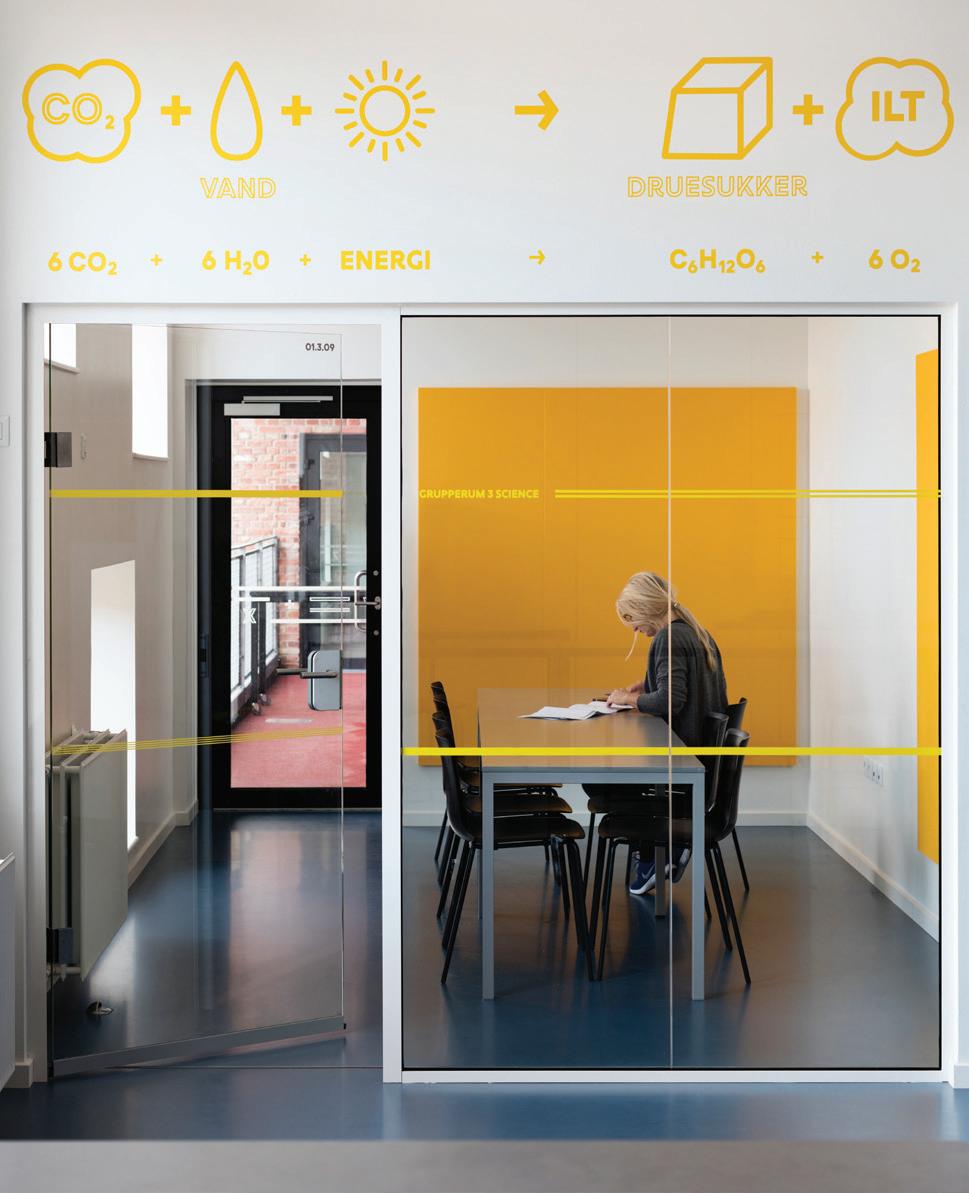

This enables students and teachers to activate softer, focused lighting around communal work tables. Over a period of eight months, the team found that classes gravitated to the pendant lamps for quieter activities, such as reading and mathematics and they made an interesting discovery: In 70 percent of situations when the lamps were on, average noise levels in the classroom were measurably lower. Imke Wies van Mil, a Ph.D. student with Henning Larsen specializing in artificial lighting design, suggests the adaptable lighting may help the classrooms suit a wider range of learning preferences. “I think what we generally do is flood classroom spaces with the same type of uniform light. This might not be a problem for the average student, but if there’s a student who is more easily distracted, or just has a different visual comfort level, the full lighting could be distracting,” Wies van Mil says. “We heard feedback from teachers who felt that the pendant lamps made the biggest difference to these more restless children. So you can see it in more of the extremes, but this works through to the whole class – if the disruptive student is less disruptive, the whole class feels it.”

Room for all Two years after its doors opened the Frederiksbjerg School remains one of the only examples worldwide of a school purpose-built to suit an active educational vision. The physical design provides a learning environment that allows students to exercise motion and autonomy.
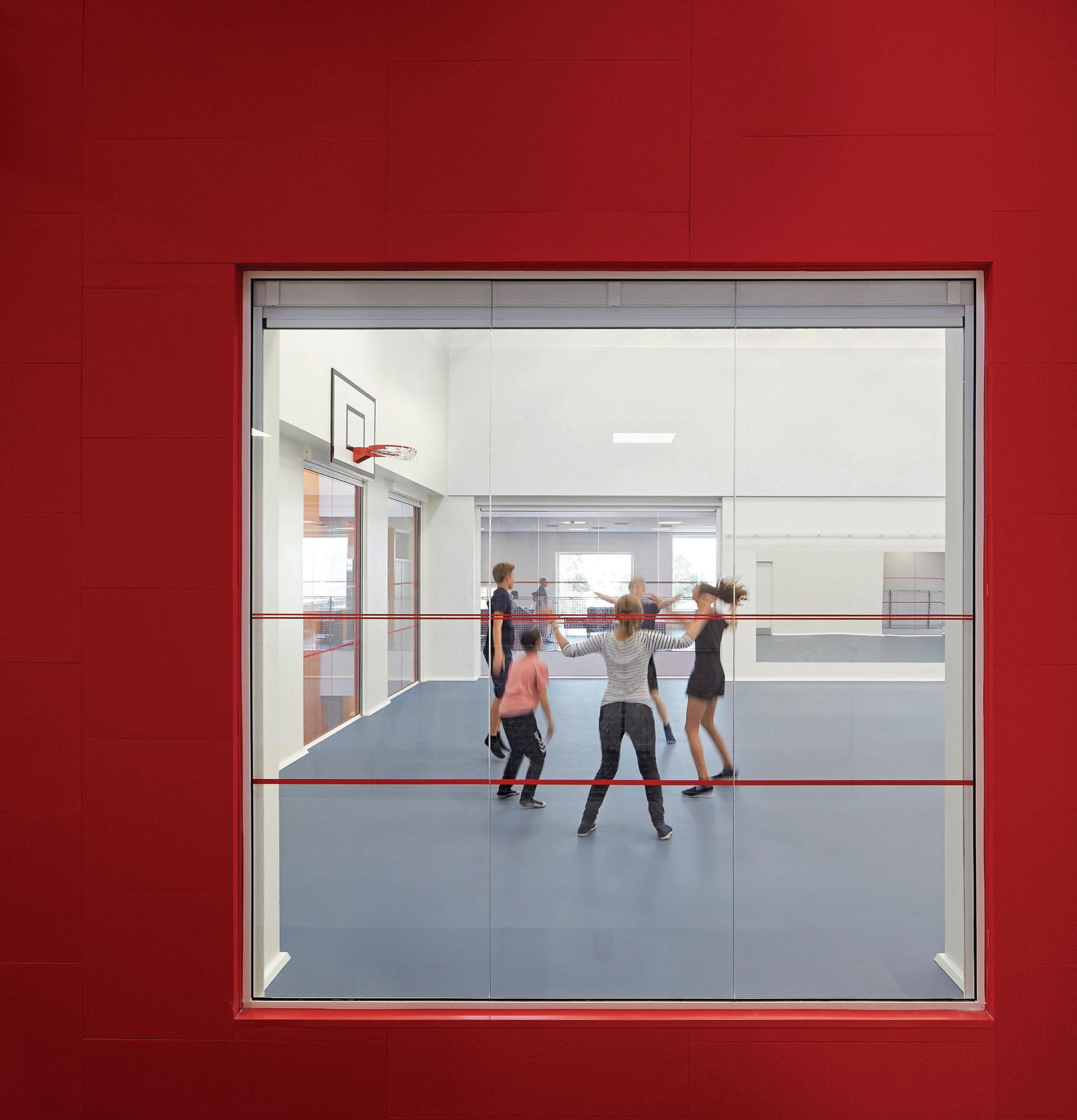
For many students, the school is the first formal educational setting they have experienced, and it stands out as one with greater room for personalized learning. Hansen says that she hosts at least one group of visitors every week, drawn from across Europe and Scandinavia to tour the premises. No formal studies at Frederiksbjerg School have yet substantiated the emerging scientific support for physical motion in schools, but Hansen says she notices a difference in this new learning environment. “I think students here are more motivated; they have more control over how they learn and they stay active. From that, I think they must learn more. But I also see them learning beyond the classroom, developing skills that would never show up on a standardized test,” Hansen says. “I think it’s too early to take data and look for concrete improvements. We are going for life-long learning, instead of getting ready for exams.” Every Wednesday evening, a group of adults arrives to practice Brazilian martial arts in the third floor dance studio. The local capoeira club is part of a community network that keeps the school active long past the end of the school day, from afternoon Italian lessons to weekend basketball on the outdoor courts. Though the visiting adults might opt to take the stairs instead of the climbing wall, their presence affirms the school’s wider role as a community focal point; a space that offers benefits far beyond the school day. The Frederiksbjerg School is in perpetual motion: It stands as a proof of concept for active and open education, a suggestion that learning is sometimes best in stockinged feet.








